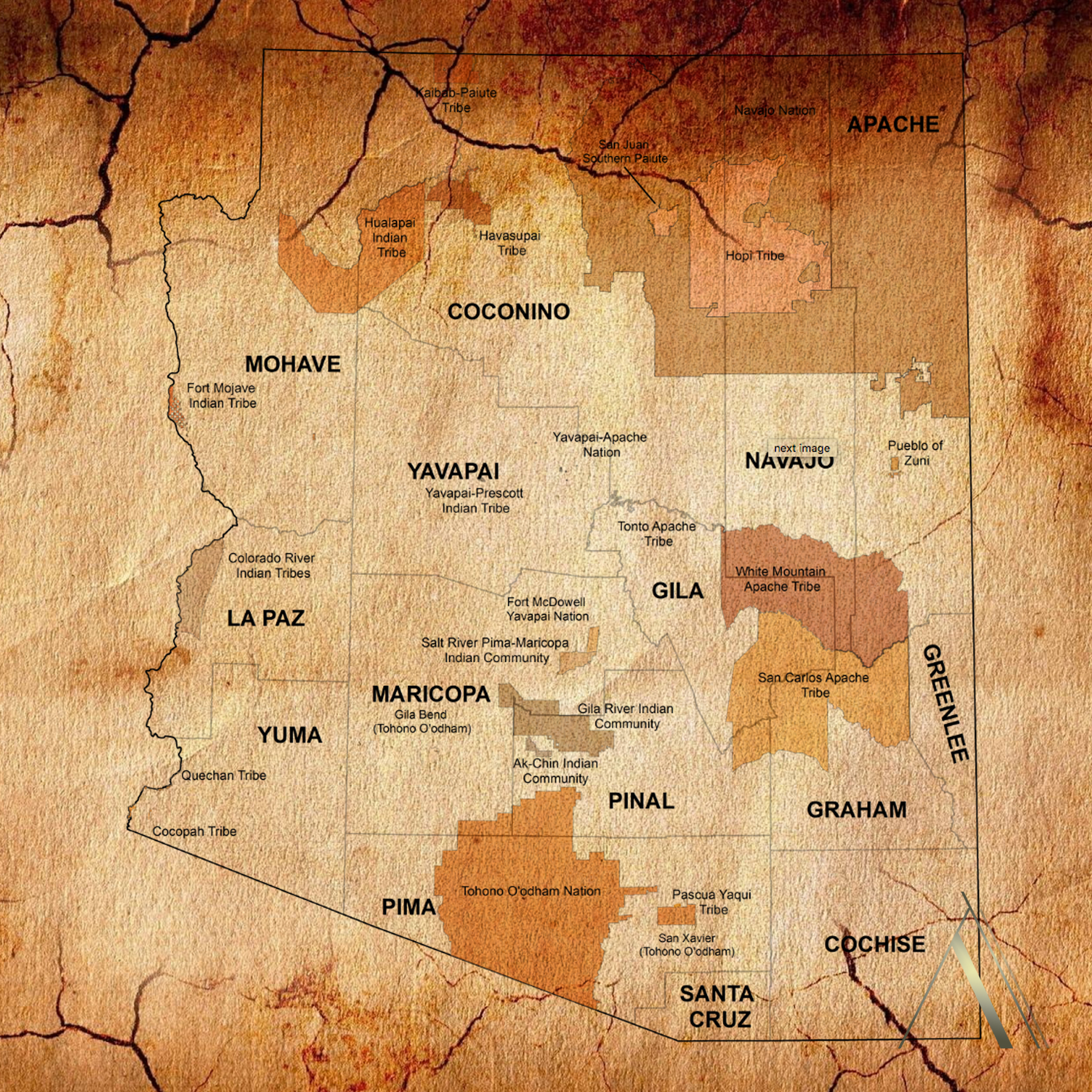Arizona’s Indigenous Tapestry: A Journey Through Tribal Lands
Arizona’s Indigenous Tapestry: A Journey Through Tribal Lands

Arizona, a state known for its dramatic landscapes and scorching sun, is also home to a vibrant and diverse tapestry of Indigenous cultures. For centuries, 22 federally recognized tribes have called this land their home, each with its own unique history, traditions, and stories. From the towering mesas of the Navajo Nation to the verdant valleys of the Tohono O’odham, Arizona’s tribal lands offer a glimpse into a rich and enduring heritage.
A History Woven with Resilience
Related Articles: Arizona’s Indigenous Tapestry: A Journey Through Tribal Lands
- Boom Goes The Fourth! Where To Find The Best Fireworks Near You (Hint: It’s On A Reservation)
- Beyond The City Lights: Exploring Native American Culture Near LA
- Unveiling Native American Heritage: Discover the Enchanting World of Reservations Near You
- California’s Biggest Reservation: A Land Of Resilience And Tradition
- Unveiling the Heritage and Resilience of Indian Nations in New York State
Long before the arrival of European settlers, these lands were teeming with life. The ancestors of today’s tribes thrived in this arid environment, adapting to its challenges and shaping their cultures around its bounty. Their stories are etched into the very fabric of Arizona’s landscape, from the petroglyphs that adorn ancient rock walls to the intricate irrigation systems that sustained their communities.
But the arrival of European settlers brought with it a wave of displacement, disease, and forced assimilation. Many tribes were forcibly relocated, their traditional ways of life disrupted. Despite these hardships, the spirit of resilience remained strong. Tribes fought for their sovereignty, their cultural integrity, and their right to self-determination.
A Tapestry of Diversity
Today, Arizona’s tribal lands are a vibrant testament to the enduring spirit of Indigenous peoples. Each tribe has its own unique language, traditions, and cultural practices. From the intricate beadwork of the Hopi to the powerful storytelling of the Apache, these cultural expressions are a testament to the resilience and creativity of Arizona’s Indigenous communities.
Exploring the Tribal Lands
Visiting Arizona’s tribal lands is an opportunity to immerse yourself in a world of rich history and vibrant culture. Here are just a few of the many tribes and their unique offerings:

Navajo Nation: The largest reservation in the United States, the Navajo Nation spans over 27,000 square miles. Visitors can explore stunning landscapes, learn about traditional weaving and silversmithing, and witness the vibrant ceremonies and dances that are a cornerstone of Navajo culture.
-
Hopi Tribe: Known for their distinctive pottery, kachina dolls, and intricate dances, the Hopi people have a long and rich history. Visitors can explore their mesa top villages, witness the annual Snake Dance, and learn about their deep connection to the land.
-
Yavapai-Apache Nation: The Yavapai-Apache Nation is known for its breathtaking scenery, including the majestic Montezuma Castle National Monument. Visitors can explore the tribe’s history through its museums and cultural centers, and experience the beauty of the surrounding landscape.
-
Tohono O’odham Nation: The Tohono O’odham Nation is known for its vast desert lands and traditional farming practices. Visitors can learn about their unique culture, witness the intricate basket weaving, and experience the beauty of the Sonoran Desert.


Beyond the Tourist Trail
While these tribes offer a glimpse into the richness of Indigenous culture, it’s important to remember that these lands are more than just tourist attractions. They are the homelands of sovereign nations, each with its own government, laws, and traditions. When visiting tribal lands, it’s crucial to be respectful of these communities and their culture.
Respectful Tourism
Here are some tips for respectful tourism on tribal lands:
- Do your research: Learn about the tribe’s history, culture, and customs before you visit.
- Be mindful of your language: Avoid using offensive or disrespectful language, and be aware of the power of words.
- Respect cultural practices: Be mindful of ceremonies and traditions, and avoid interrupting or interfering with them.
- Support local businesses: Purchase crafts, art, and food from tribal businesses to support the local economy.
- Leave no trace: Respect the environment and leave no trace of your visit.
The Future of Indigenous Culture
Arizona’s tribes are not just relics of the past. They are vibrant and thriving communities, actively working to preserve their culture and traditions for future generations. They are leaders in environmental stewardship, economic development, and community building. Their stories are a testament to the resilience, creativity, and enduring spirit of Indigenous peoples.
FAQs About Arizona’s Indian Tribes
Q: How many tribes are there in Arizona?
A: There are 22 federally recognized tribes in Arizona.
Q: What are some of the most popular tribal attractions in Arizona?
A: Some popular attractions include the Navajo Nation, the Hopi Reservation, Montezuma Castle National Monument, and the Tohono O’odham Nation.
Q: How can I learn more about Arizona’s tribal history and culture?
A: Visit tribal museums, cultural centers, and websites. You can also attend tribal events and festivals.
Q: How can I support Arizona’s tribes?
A: Support tribal businesses, donate to tribal organizations, and advocate for tribal rights.
Q: What are some tips for respectful tourism on tribal lands?
A: Be respectful of tribal customs and traditions, learn about the tribe’s history and culture, and support local businesses.
Conclusion
Arizona’s tribal lands are a treasure trove of history, culture, and natural beauty. They offer a unique opportunity to learn about the rich and enduring heritage of Indigenous peoples. By visiting these lands with respect and understanding, we can help preserve their culture and traditions for future generations.

Closure
Thus, we hope this article has provided valuable insights into Arizona’s Indigenous Tapestry: A Journey Through Tribal Lands. We appreciate your attention to our article. See you in our next article!

